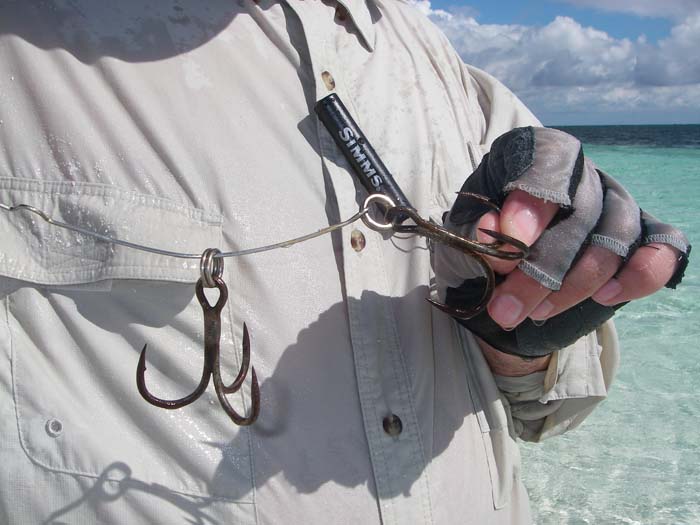

Catch Fish with
Mike Ladle
Information Page
SEA FISHING
For anyone unfamiliar with the site always check the FRESHWATER, SALTWATER and TACK-TICS pages. The Saltwater page now extends back as a record of over several years of (mostly) sea fishing and may be a useful guide as to when to fish. The Freshwater stuff is also up to date now. I keep adding to both. These pages are effectively my diary and the latest will usually be about fishing in the previous day or two. As you see I also add the odd piece from my friends and correspondents if I've not been doing much. The Tactics pages which are chiefly 'how I do it' plus a bit of science are also updated regularly and (I think) worth a read (the earlier ones are mostly tackle and 'how to do it' stuff).
07 December 2007
So you think your (tackle's) hard enough!
Lilian wants to get me a new reel for Christmas. Of course I'm chuffed with the idea but what should it be? As you probably know I have two Shimano Stradic 4000s that I use for my spinning these days. This reel is fantastic in freshwater and in the sea both in the UK and abroad it has never let me down. The bale arm mechanism is reliable, the clutch is silky smooth, it is light, it casts well, it stands up to lots of abuse and apart from the fact I have replaced one set of worn out handles (after five or six years of spinning so I can't complain) it has been fantastic. In short, for the biggest bass, pike or salmon that swims I have no doubt that my reels are the business. However, on one or two occasions, tropical monsters have spooled me.
Now, my reels are loaded with 30lb Whiplash or Dynon braid and although the standard spool holds getting on for 300m of this very fine line, it's not enough for really big powerful fish like the tuna and giant trevally that Steve and his pals were catching in the Seychelles. To be honest I'm not sold on the idea of catching monsters from boats but in the tropics there's always the chance of a really big fish from the shore and I'd like to feel that I had plenty of line on my spool should the occasion arise. So, what shall I do?
I do a lot of arm waving in the course of a few hours spinning (note the 'worn out' handles above) and the last thing I want is to wave a couple of pounds of metal around on the handle of my rod, so I'm looking for a compromise between a bit more spool capacity, a strong smooth clutch and something that won't tire me out. I've decided that instead of the 4000 size reels a 6000 is probably about right and if it will hold 400m of 30lb superbraid then I'll be happy. As Steve pointed out to me - if I was going to fish specifically for wahoo, tuna, GTs, sailfish and the like then a 10,000 or even 20,000 model would be the only option.
While I'm on about the strength of the gear there are several things to consider. A decent sized oceanic fish of perhaps 80-100lb can pull very hard and move pretty fast so you have to be able to apply enough pressure to tire it before it runs out all your line. This depends on - (1) the strength of the line, I think that 15-20lb (7-10kg) is about as much as I'd like to pull for any length of time (try pulling a spring balance to 15lb on your normal gear) so whatever the fish thinks I don't think that I can cope with much more. So in this case 30lb line should be ample - if you have enough of it. (2) the power of the clutch, the clutch plates have to be capable of tolerating prolonged spinning under substantial pressure without seizing up (cheap or inferior kit just won't 'cut the mustard'). (3) the distance in which you have to stop the fish before it encounters a snag (rocks, reefs, sea bed). This latter is really the crunch. It may be that you will have to clamp down on the spool and try to stop a fish more or less dead. Should this occur the hook, line and reel HAVE TO BE strong enough to prevent the fish breaking them. It will not matter how skillful you are or how sophisticated the tackle - if the fish reaches the snags you've lost it. So here's the compromise, do I want to make hard work of fishing just in case I have to get involved in a brief tug-of-war with something. My decision is NO I DON'T!
The last thing to think about is the strength of the lure and the trace. If you are likely to hook lots of fish with razor-sharp teeth such as barracuda, wahoo or even kingfish then (in my view) wire is the best option. Nowadays you can have a short length of knottable wire between the line and the lure to allow for biteoffs. It's soft and pliable enough to allow a lure to 'work', not very visible and tough enough to tolerate lots of scraping and hacking. In addition you might want an additional 'rubbing trace' to protect the business end of thin braid against hook points, rough skin, sharp scales or abrasive fins. I don't like the idea of very long or heavy rubbing traces (100lb nylon etc.) so I'll settle for a metre or so of 30lb nylon, accepting the risks of cut offs (again I'm not into trying to haul fish out of the reef - if they get in there they've gone).
Lastly we're down to the lures. You might think that any old lure would do - not so. The fish may well be attracted to cheap flashy lures with screw-eye or looped-wire hook attachments but for security you need lures wired right through the body. See the picture if you don't believe me.
If you have any comments or questions about fish, methods, tactics or 'what have you!' get in touch with me by sending an E-MAIL to - docladle@hotmail.com
Teeth.
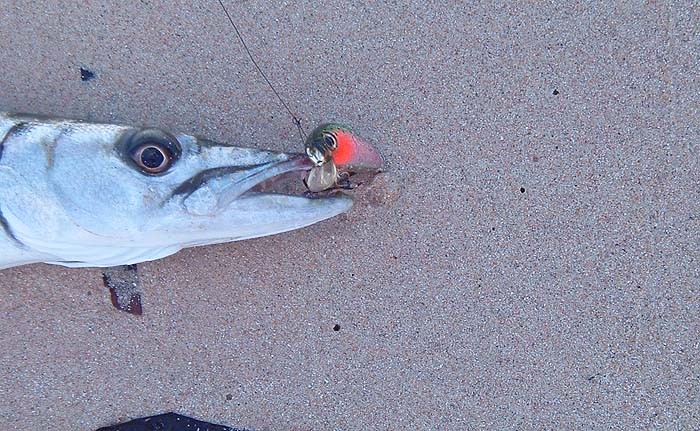
Barracuda.
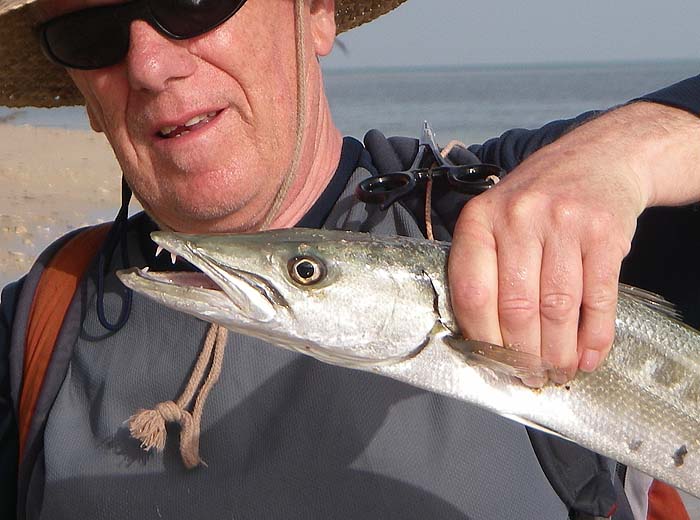
Ugh!!!!
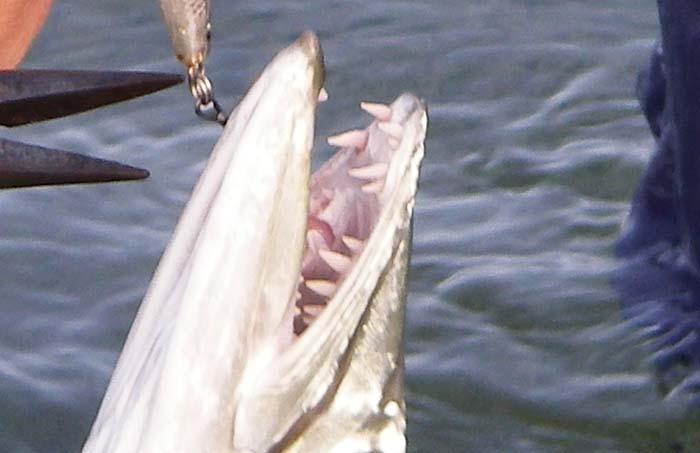
Damage.
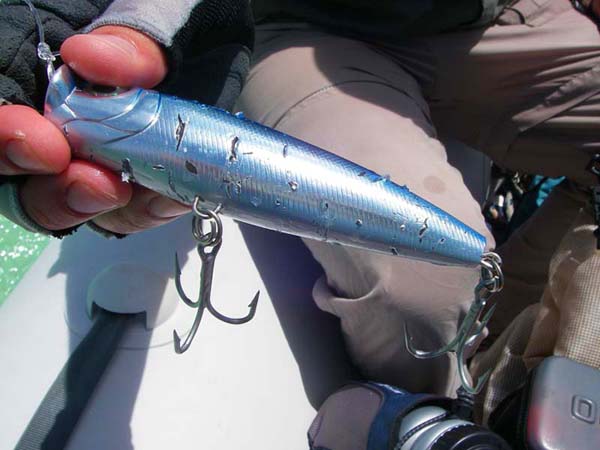
The ultimate.
